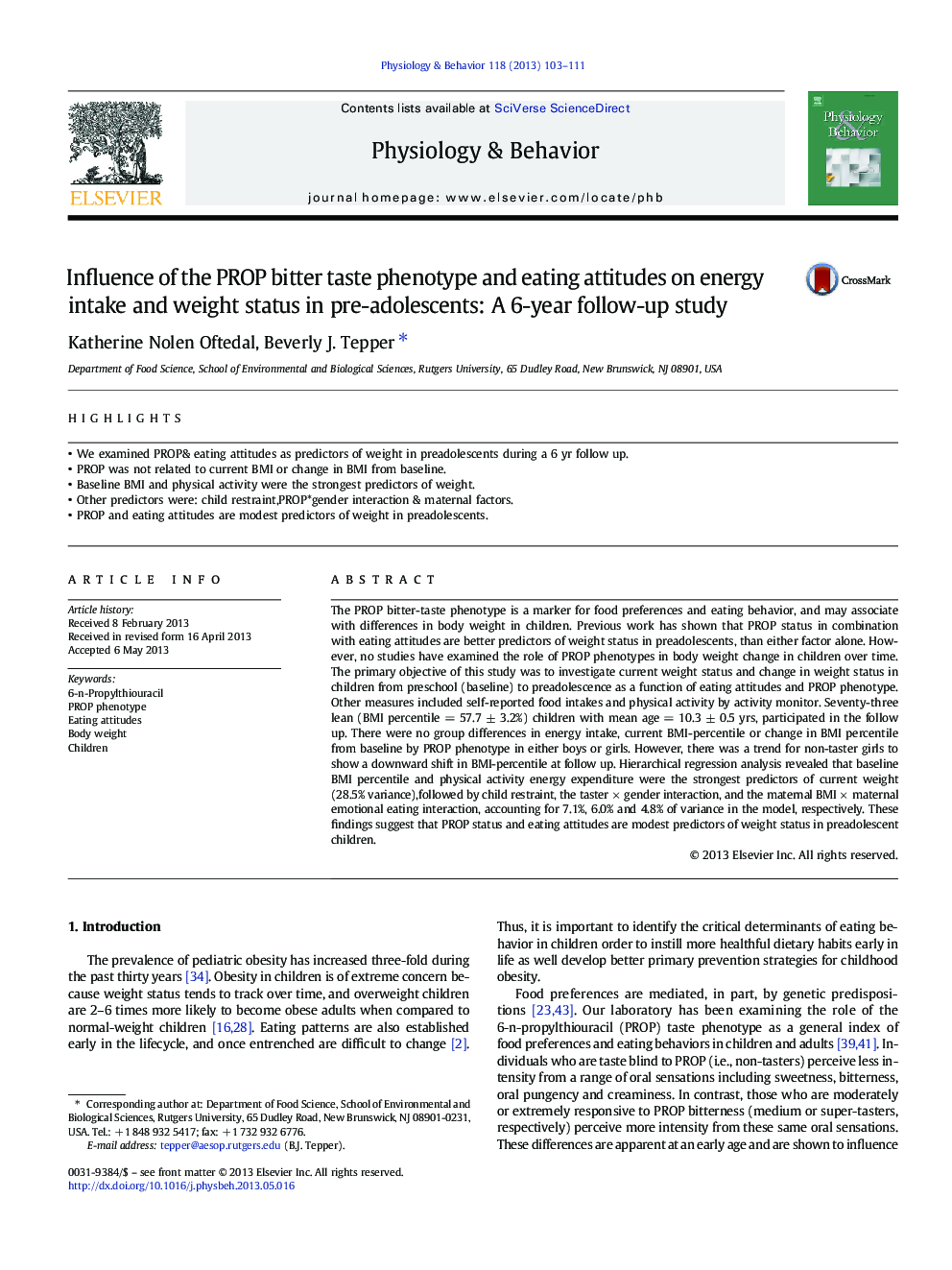| کد مقاله | کد نشریه | سال انتشار | مقاله انگلیسی | نسخه تمام متن |
|---|---|---|---|---|
| 5924705 | 1571199 | 2013 | 9 صفحه PDF | دانلود رایگان |
- We examined PROP& eating attitudes as predictors of weight in preadolescents during a 6 yr follow up.
- PROP was not related to current BMI or change in BMI from baseline.
- Baseline BMI and physical activity were the strongest predictors of weight.
- Other predictors were: child restraint,PROP*gender interaction & maternal factors.
- PROP and eating attitudes are modest predictors of weight in preadolescents.
The PROP bitter-taste phenotype is a marker for food preferences and eating behavior, and may associate with differences in body weight in children. Previous work has shown that PROP status in combination with eating attitudes are better predictors of weight status in preadolescents, than either factor alone. However, no studies have examined the role of PROP phenotypes in body weight change in children over time. The primary objective of this study was to investigate current weight status and change in weight status in children from preschool (baseline) to preadolescence as a function of eating attitudes and PROP phenotype. Other measures included self-reported food intakes and physical activity by activity monitor. Seventy-three lean (BMI percentile = 57.7 ± 3.2%) children with mean age = 10.3 ± 0.5 yrs, participated in the follow up. There were no group differences in energy intake, current BMI-percentile or change in BMI percentile from baseline by PROP phenotype in either boys or girls. However, there was a trend for non-taster girls to show a downward shift in BMI-percentile at follow up. Hierarchical regression analysis revealed that baseline BMI percentile and physical activity energy expenditure were the strongest predictors of current weight (28.5% variance),followed by child restraint, the taster Ã gender interaction, and the maternal BMI Ã maternal emotional eating interaction, accounting for 7.1%, 6.0% and 4.8% of variance in the model, respectively. These findings suggest that PROP status and eating attitudes are modest predictors of weight status in preadolescent children.
Journal: Physiology & Behavior - Volume 118, 13 June 2013, Pages 103-111
